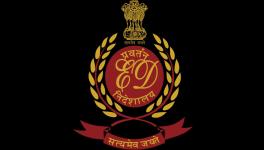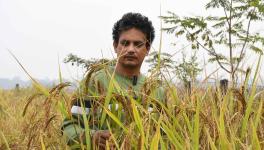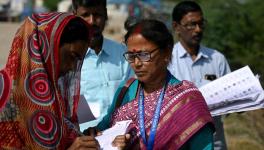West Bengal Polls: How Much Truth to TMC’s Promise of Improving Public Healthcare?
File Photo.
In its manifesto released ahead of the ongoing elections in West Bengal, the Trinamool Congress promised that it would double the current spending on health and double the number of posts for doctors, nurses, and paramedics. However, the promise makes one wonder why has the Mamata Banerjee-led TMC government not made these improvements over the last 10 years that it has been in power.
Public-funded healthcare in West Bengal – like in several other states across the country – struggles with due to lack of proper infrastructure and shortage of doctors and staff. The government hospitals are ill-equipped to treat incoming patients, forcing ordinary citizens to rely on expensive treatment in private hospitals.
According to data from the Statistical Yearbook India 2018, published by the Ministry of Statistics and Programme Implementation, and rural health statistics released by the Ministry of Health and Family Welfare (MoHFW), the state’s primary and secondary healthcare systems both struggle with shortage of staff and inadequate infrastructure.
Sub-centres, the most peripheral and first point of contact between the primary healthcare system and the community, struggle with a lack of male health workers. According to Indian Public Health Standards (IPHS), each sub-centre should have one female health worker or auxiliary nurse midwife (ANM), and a male health worker. While the sub-centres in West Bengal have an adequate number of female health workers and ANMs, there is a massive shortfall of male health workers.
According to the Rural Health Statistics (RHS) 2018,10,357 male health workers are needed in the state, and the number of posts sanctioned by the government is 9,171, out of which only 2,848 are in position, resulting in a shortfall of 7,509 workers.
Out of 913 female health assistants needed at Public Health Centres (PHCs) across the state, there were only 277, leading to a shortfall of 636 workers, almost 70% of the required amount. The number of sanctioned posts is 461. The situation is even worse for male health assistants. While the number of required assistants remains the same, the number of sanctioned posts is an even lesser 316, out of which only 113 posts are filled, causing a shortfall of 800 workers. About 64% of the PHCs function with only one doctor; 85 PHCs do not have a doctor.
The situation is similar at Community Health Centres (CHCs), which constitute the secondary level of healthcare. The National Rural Health Mission (NRHM) points out that the CHCs should provide all essential services to the rural population, including routine and emergency care in surgery, medicine, obstetrics and gynaecology, dental, and AYUSH. According to IPHS, CHCs should also have newborn stabilisation units, facilities for medical termination of pregnancy (MTP) for second trimester pregnancy, Integrated Counselling and Testing Centre (ICTC), blood storage, and Anti-retroviral Therapy centre.
According to the RHS 2018, despite the requirement of 348 surgeons at CHCs across the state, the number of sanctioned posts is zero, and hence, no surgeons have been recruited. Out of the 348 obstetricians and gynaecologists required, only 58 are in position, resulting in a shortfall of 290 doctors. Of 348 physicians required, just 42, about 12%, are in position. The numbers are worse for paediatricians, with only 25 doctors at a shortfall of 92.81%. Out of the total 1,392 specialists required in PHCs across the state, only 125 are in position, resulting in a total shortfall of 91%. The situation is similar for laboratory technicians.
As the CHCs and PHCs struggle with a lack of doctors, the queues at government hospitals keep growing longer. At times patients have to wait at the gates for four hours before they can even head to the registration counters. While the doctor population ratio in West Bengal – each government allopathic doctor catering to 10,411.15 people – is very close to the national average of 9,085.9 people per doctor, the lack of facilities at PHCs and CHCs lead to overcrowding of hospitals, which in turn forces people to opt for private healthcare providers.
Get the latest reports & analysis with people's perspective on Protests, movements & deep analytical videos, discussions of the current affairs in your Telegram app. Subscribe to NewsClick's Telegram channel & get Real-Time updates on stories, as they get published on our website.























